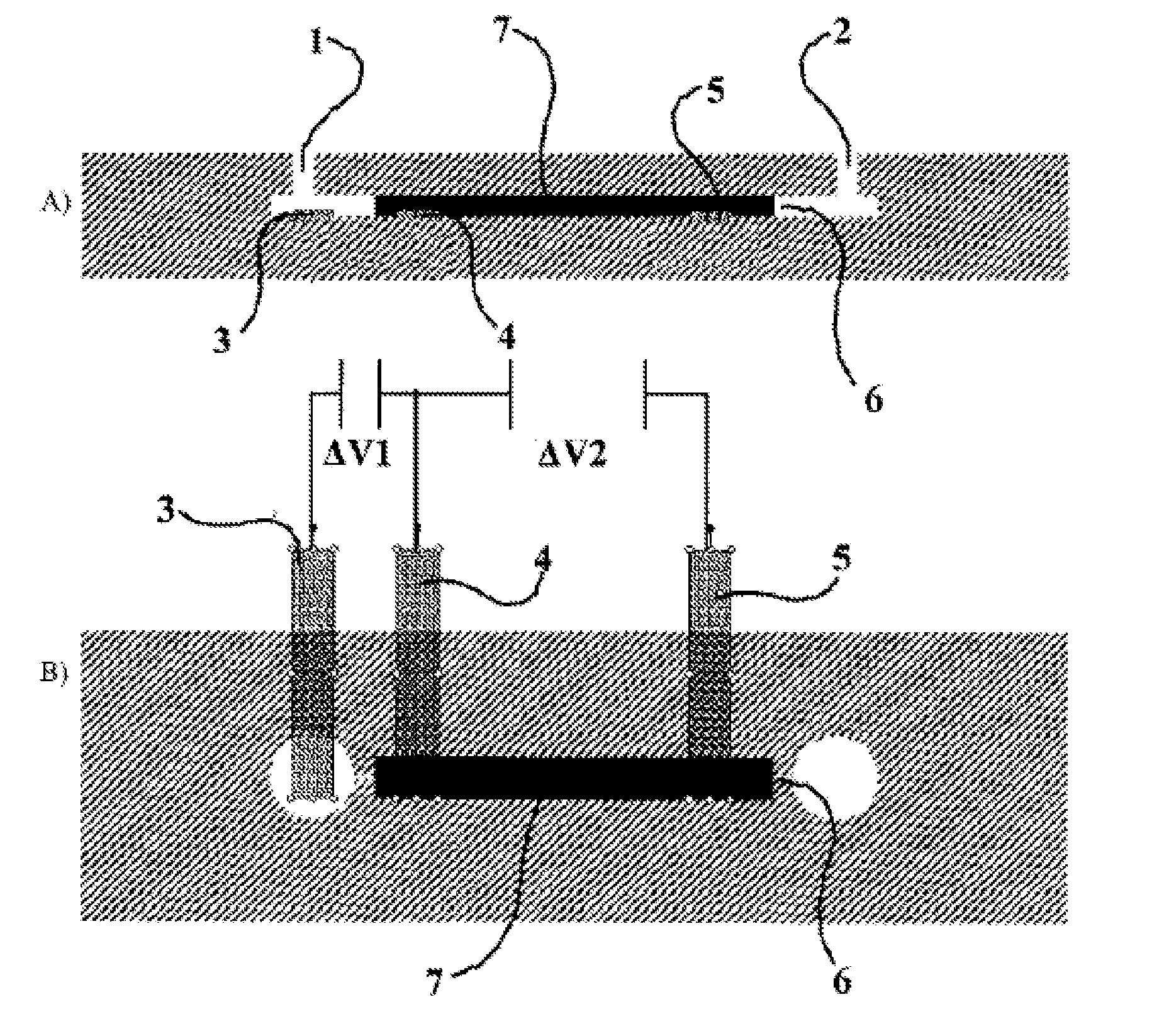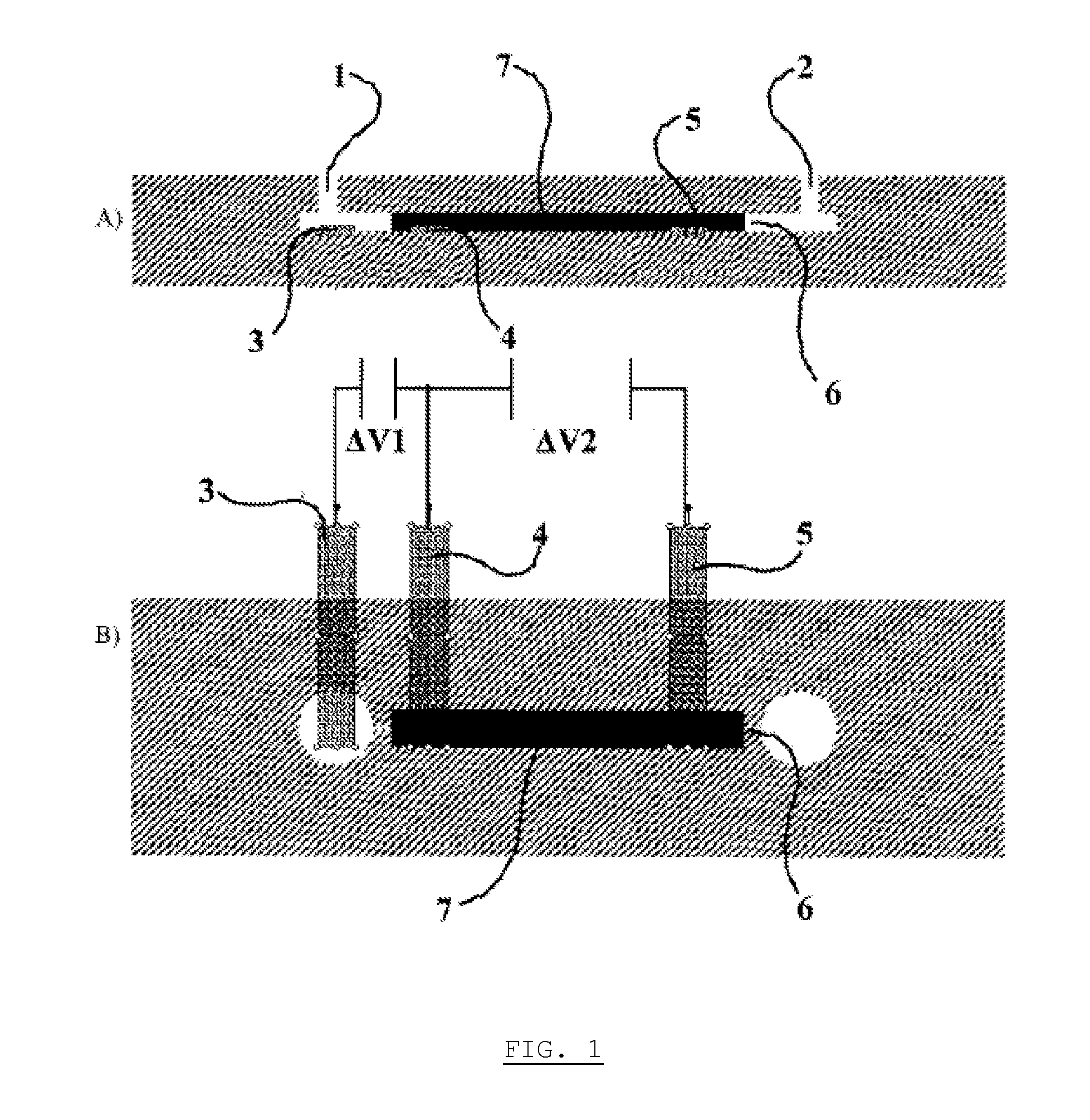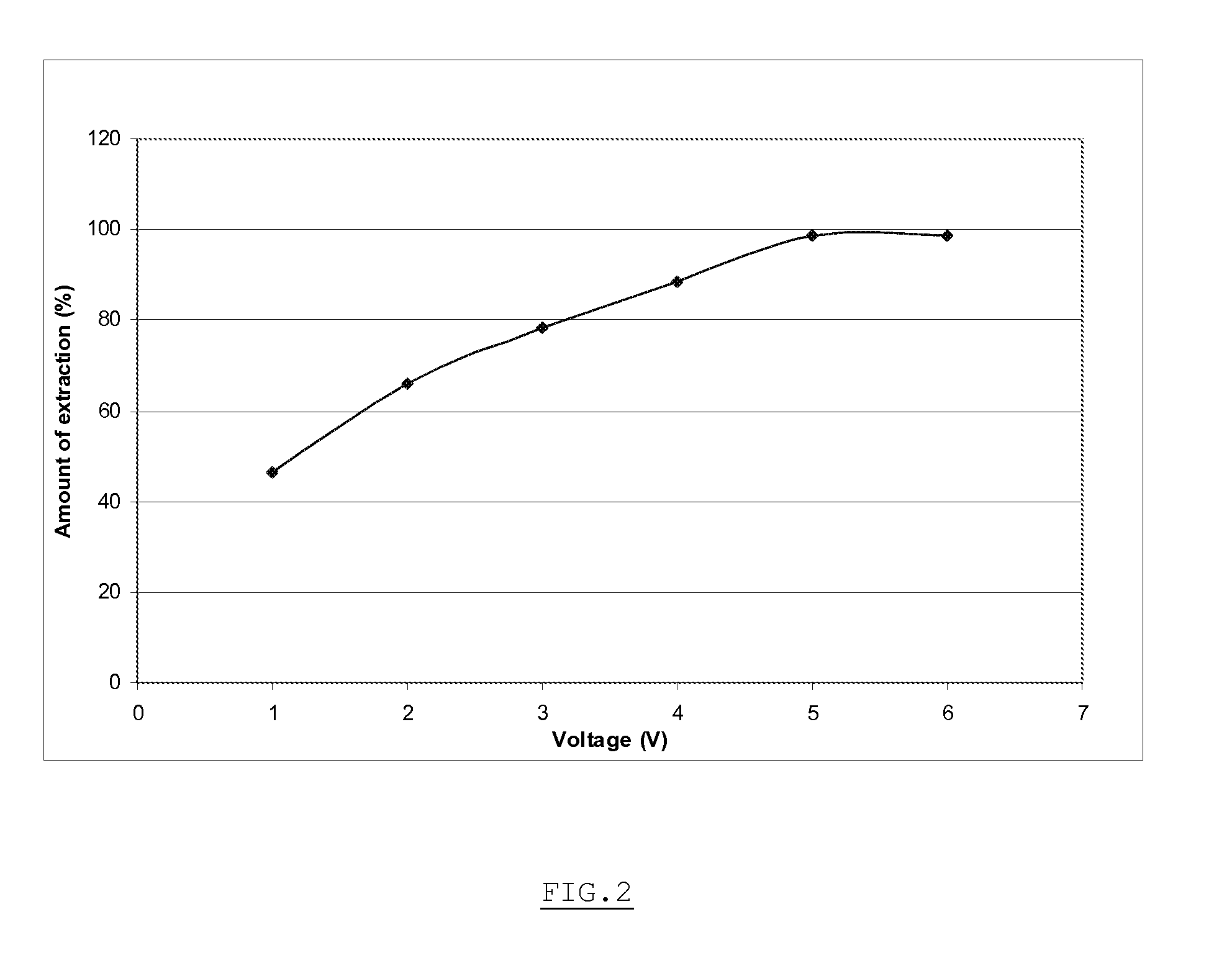Electrochemical 18f extraction, concentration and reformulation method for raiolabeling
a technology of raiolabeling and enriched [18o] water, which is applied in the direction of polycrystalline material growth, nuclear engineering, separation processes, etc., can solve the problems of inability to achieve meaningful metabolic images, cost of enriched [18o] water as target material, and difficulty in achieving the effect of reducing the number of enriched [18o] water samples
- Summary
- Abstract
- Description
- Claims
- Application Information
AI Technical Summary
Benefits of technology
Problems solved by technology
Method used
Image
Examples
example 1
EDLE of [18F] Fluorides on Carbon Fibers
[0056]In the electrochemical set-up as shown on FIG. 1, the large specific surface area conducting material 7 consists in bundles of carbon fibers. The specific surface area in this case is 4375 cm2 / g. A voltage of +3V is applied to the electrode 4, that polarizes the bundles of carbon fibers. A 2 ml solution containing 1.47 mCi of [18F], obtained by rinsing a cyclotron target with water and diluting it, is passed through the electrochemical cell in 1 minute using a syringe pump. The activity extracted from the solution and actually trapped in the electrochemical cell is measured. This allows extracting 98+% (1.44 mCi) of the activity entering in the cell.
example 2
EDLE of [18F] Fluorides on a Reticulated Vitreous Carbon (Duocel® from ERG, Oakland, Canada)
[0057]In the electrochemical set-up as shown on FIG. 1, the large specific surface area conducting material 7 consists in this case in carbon aerogel / nanofoam. A voltage of +6V is applied to the electrode 4, that polarizes the reticulated vitreous carbon. A 2 ml solution containing 1.4 mCi of [18F], obtained as for example 1, is passed through the electrochemical cell in 1 minute using a syringe pump. The activity extracted from the solution and actually trapped in the electrochemical cell is measured. This allows extracting 31+% (405 μCi) of the activity entering in the cell.
example 3
EDLE of [18F] Fluorides on a Carbon Aerogel / Nanofoam Monolith (from Marketech International Inc., Port Townsend, Wash., USA)
[0058]In the electrochemical set-up as shown on FIG. 1, the large specific surface area conducting material 7 consists in this case in carbon aerogel / nanofoam. A voltage of +3V is applied to the electrode 4, that polarizes the carbon aerogel / nanofoam. A 2 ml solution containing 1 mCi of [18F], obtained as for example 1, is passed through the electrochemical cell in 1 minute using a syringe pump. The activity extracted from the solution and actually trapped in the electrochemical cell is measured. This allows extracting 19+% (194 μCi) of the activity entering in the cell. Actually, there were preferential pathways in the vicinity of the carbon aerogel. Moreover, the liquid can not enter the nanopores because the transit time is too short; if the flowrate is four times reduced, the extracted amount of activity is 36%.
PUM
| Property | Measurement | Unit |
|---|---|---|
| Temperature | aaaaa | aaaaa |
| Temperature | aaaaa | aaaaa |
| Diameter | aaaaa | aaaaa |
Abstract
Description
Claims
Application Information
 Login to View More
Login to View More - R&D
- Intellectual Property
- Life Sciences
- Materials
- Tech Scout
- Unparalleled Data Quality
- Higher Quality Content
- 60% Fewer Hallucinations
Browse by: Latest US Patents, China's latest patents, Technical Efficacy Thesaurus, Application Domain, Technology Topic, Popular Technical Reports.
© 2025 PatSnap. All rights reserved.Legal|Privacy policy|Modern Slavery Act Transparency Statement|Sitemap|About US| Contact US: help@patsnap.com



